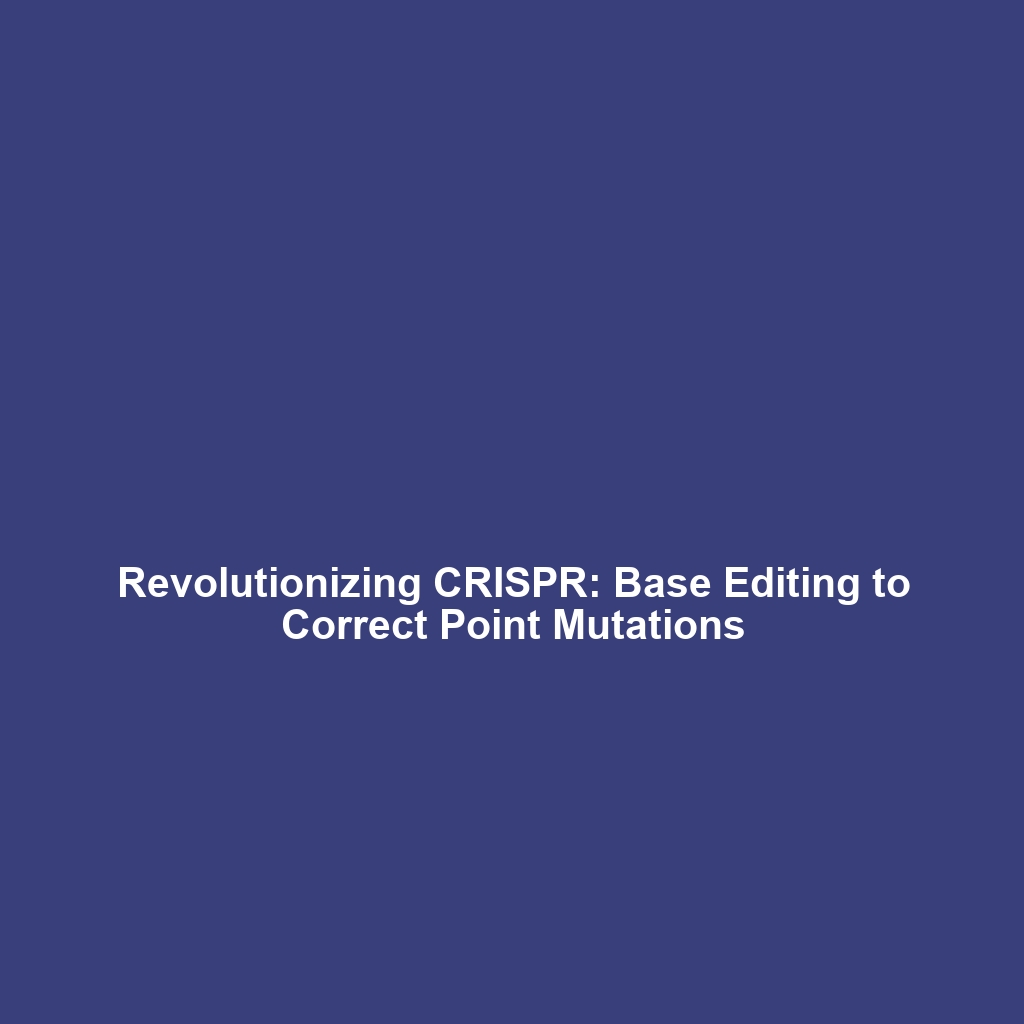Applications of Base Editing in Correcting Point Mutations
Introduction
Base editing, a revolutionary CRISPR technology, enables precise modification of DNA at single bases without causing double-strand breaks. This innovation is particularly significant for correcting point mutations, which are often linked to genetic disorders. Understanding the applications of base editing not only enhances the field of gene editing but also opens new avenues for therapeutic interventions. This article delves into the major principles, real-world uses, and future directions of base editing within the broader context of CRISPR gene editing.
Key Concepts
Understanding Base Editing
Base editing is a sophisticated tool derived from CRISPR technologies that allows for the conversion of one DNA base to another—specifically, transitioning adenine (A) to guanine (G) or cytosine (C) to thymine (T). This technique significantly enhances the precision of gene editing compared to traditional CRISPR methods, which often involve inserting or deleting larger sections of genetic material.
Importance within Gene Editing
The focus on point mutations is critical, as these genetic alterations are responsible for numerous inherited conditions, such as sickle cell anemia and cystic fibrosis. Base editing’s ability to target and correct these minute errors offers a pathway toward effective treatments, thereby shaping the future landscape of CRISPR gene editing.
Applications and Real-World Uses
Base editing has already begun to showcase its potential in various fields:
- Genetic Disease Treatments: Current research highlights base editing’s application in correcting mutations associated with sickle cell disease.
- Agricultural Biotechnology: Modifying crops to enhance resistance to diseases and environmental stresses via base editing offers promising agricultural advancements.
- Drug Development: Base editing can be used to create cellular models of diseases that can lead to novel therapeutics.
These applications emphasize how base editing is used in addressing critical issues within CRISPR gene editing.
Current Challenges
Despite its promise, base editing faces several challenges:
- Delivery Mechanisms: Effective delivery of the editing machinery into target cells remains a significant hurdle.
- Off-Target Effects: Although reduced compared to traditional CRISPR methods, the risk of unintended mutations still exists.
- Ethical Concerns: The implications of germline editing raise ethical questions that need to be addressed.
These issues in CRISPR gene editing highlight the challenges of base editing in clinical applications.
Future Research and Innovations
As research advances, several key areas are expected to evolve:
- Enhanced Precision: New technologies aimed at increasing the accuracy and efficiency of base editing techniques are under development.
- Optimized Delivery Methods: Innovative approaches for improving the delivery of base editing components to target cells are crucial for clinical application.
- Expanding Target Scope: Future studies aim to expand the types of mutations that can be successfully edited, broadening the scope of treatable genetic disorders.
Conclusion
The applications of base editing in correcting point mutations represent a groundbreaking advancement in CRISPR gene editing. As we navigate through its real-world applications and address current challenges, the future of genetic medicine appears promising. For more in-depth information on related topics, consider exploring our articles on Genetic Engineering and Gene Therapy.

Leave a Reply